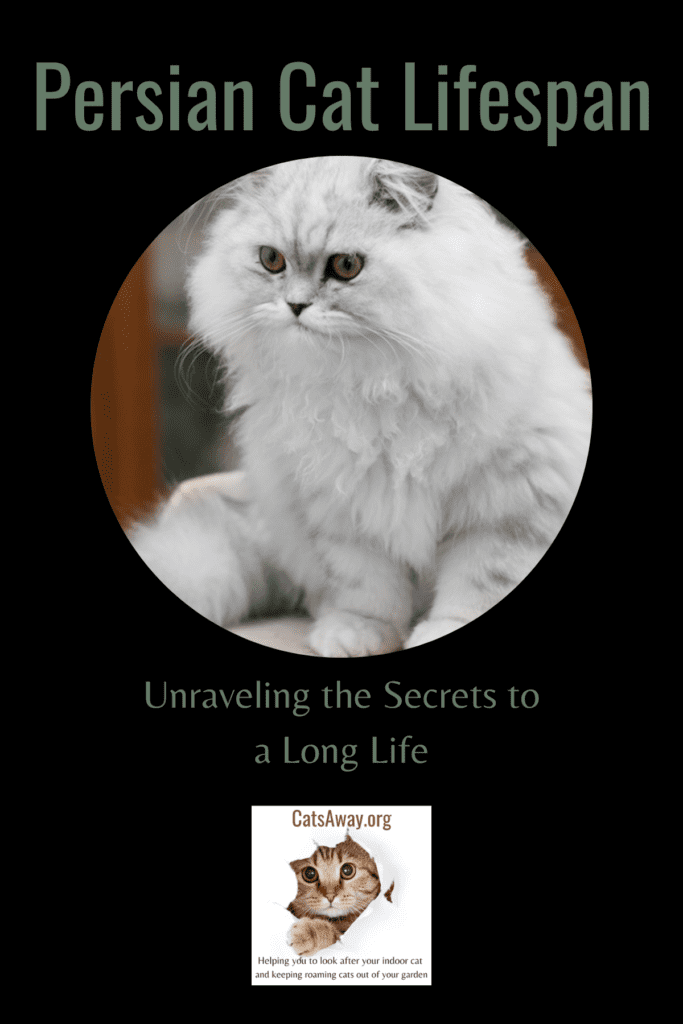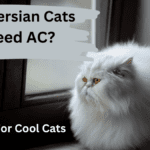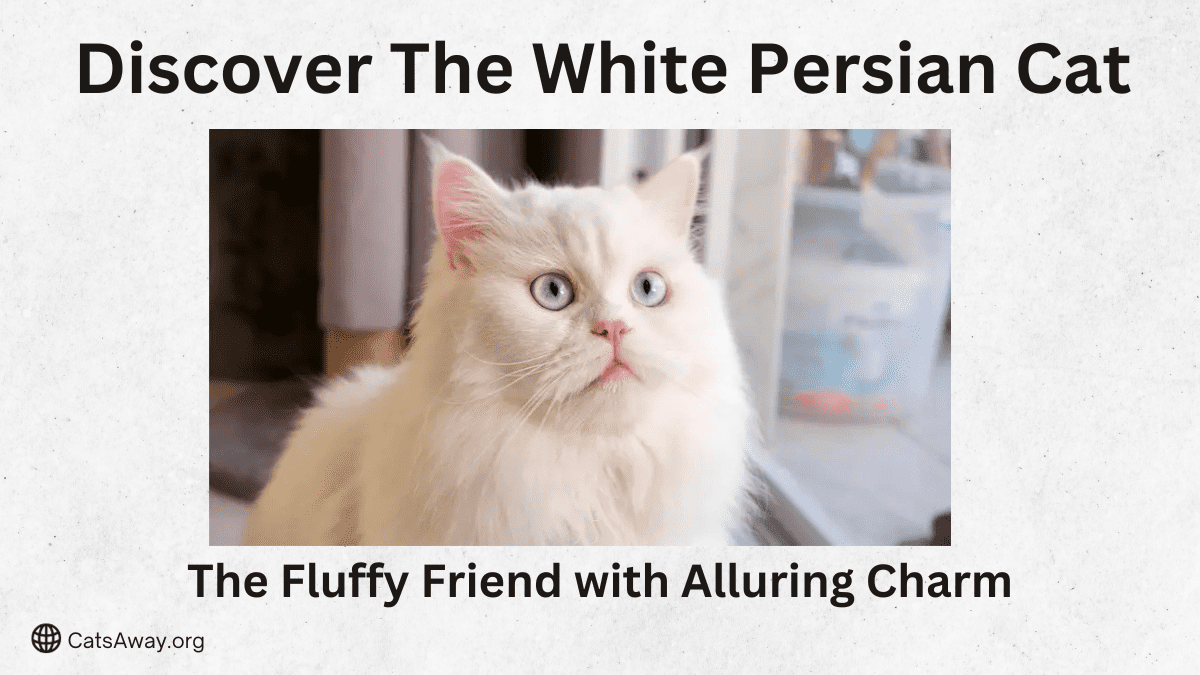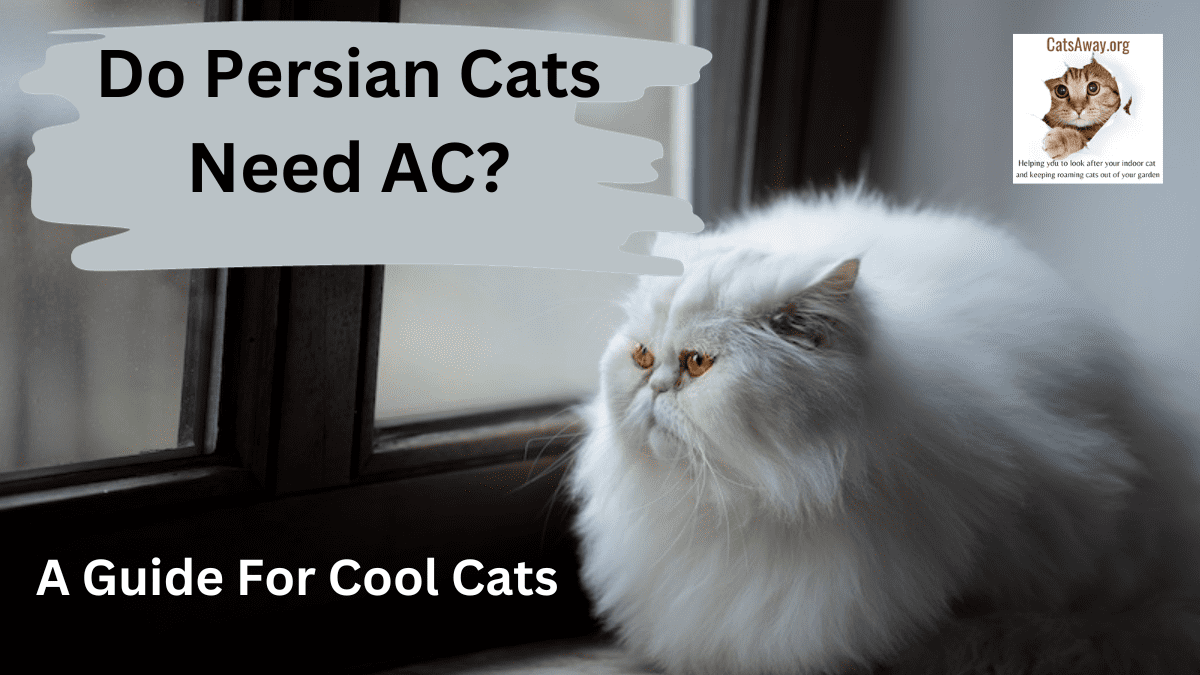If you’re interested in Persian cats, one of the questions that might come to your mind (after you have discovered how much they cost) is about their lifespan.
The Persian cat lifespan ranges between 12 and 17 years. This affectionate cats tend to have a long and healthy life, making them great companions for pet parents who enjoy their gentle and serene nature.
Persian cats are known for their stunning features, including a long coat, chubby cheeks, and beautiful big eyes.
History of Persian Cats
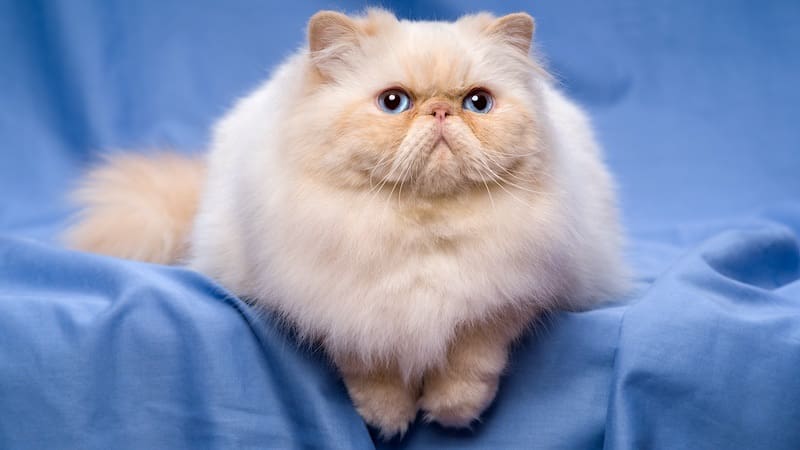
Where do Persian cats come from? Many believe these long-haired, gentle creatures originated in Mesopotamia, later called Persia, which is now modern-day Iran. European explorers in the 17th century played a significant role, as they smuggled these cats out of Persia and introduced them to the world.
Physical Characteristics of Persian Cats
You’ll notice that a Persian cat is often recognized by its long-hair and luxurious coat. Each strand of fur feels soft and silky to the touch. These cats also sport a broad and muscular body, adding to their charm and grace.
A remarkable trait of the Persian cat is its short muzzle coupled with a round face. This unique feature gives them an adorable, doll-like appearance. Their large, expressive eyes enhance their endearing looks even more.
Another point of allure in a Persian cat is its fluffy physique. Their coat is not only long but also very dense, creating an impressive halo around them. Don’t forget to appreciate that magnificent tail, which adds to their elegance.
Personality and Temperament
The Persian cat is known for its sweet and gentle temperaments. You’ll find them to be the perfect companions for relaxation.
Their playful nature keeps you entertained, while still remaining docile. They are not overly energetic, which makes for a harmonious home environment.
These adorable felines are highly adaptable. They can easily fit into any home life, making them great pets for both singles and families.
Their mild-mannered temperament ensures they’re quite friendly with other pets. If you have other animals at home, they’re likely to live in peace together.
In short, Persian cats offer a delightful combination of sweetness, playfulness, and gentleness. Embrace a Persian cat in your home to experience the heartwarming joy they bring.
Common Health Issues in Persian Cats
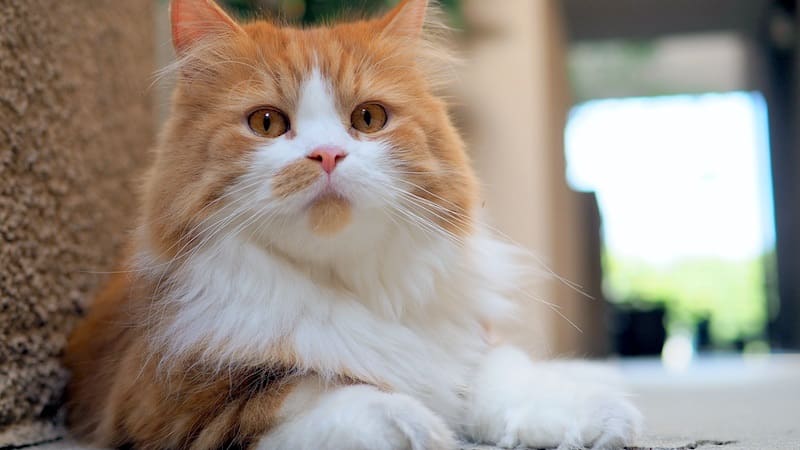
Persian cats are known for their beauty and unique appearance, but they can also face several health issues. Here are some common Persian cat health problems that you should be aware of:
Brachycephalic Obstructive Airway Syndrome: Due to their flat faces, Persian cats may experience breathing difficulties. This condition, called Brachycephalic obstructive airway syndrome, occurs because of physical traits such as narrowed nostrils and an elongated soft palate.
Polycystic Kidney Disease (PKD): This genetic condition affects the kidneys, causing numerous cysts to form. Symptoms of PKD include increased drinking and urination, diminished appetite, weight loss, nausea, and vomiting.
Eye Problems: Persian cats’ large, round eyes make them prone to excessive tearing and eye infections. Corneal ulcers are also a common issue. Regular eye care and veterinary attention can help prevent infections and complications.
Dental Disease: Due to a misaligned jaw, dental problems are more common in Persian cats. Proper dental care and monitoring can help prevent further issues.
Hypertrophic Cardiomyopathy: This heart disease is more common in Persian cats than in other cat breeds. Seek veterinary care if you notice shortness of breath, weakness, or fainting in your cat.
Remember to monitor your Persian cat’s health and provide consistent care to ensure their health and happiness.
Persian Cat Lifespan and Longevity
The average lifespan of a Persian cat is 13.5 years. This will vary depending on various factors including their environment, diet, and lifestyle.
How can you ensure that your Persian cat enjoys a long, healthy life? Providing your cat with proper care is crucial. Regular visits to the vet, a balanced diet, and a loving home can contribute to their longevity.
Of course, it’s important to remember that each Persian cat is unique. Some Persian cats are known to live beyond their average life expectancy, even reaching up to 20 years. So, it’s essential to stay attentive to your cat’s needs and health.
Feeding and Nutrition
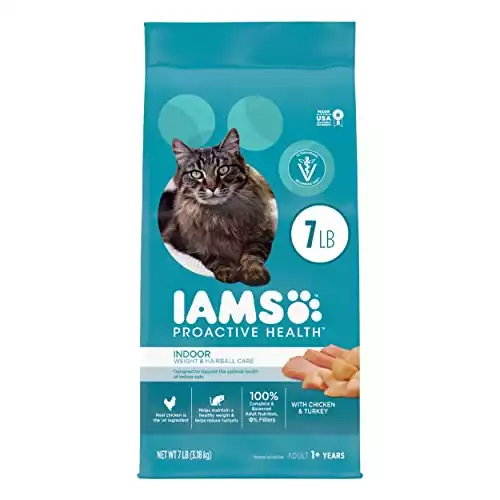 IAMS PROACTIVE HEALTH Adult Indoor Weight Control & Hairball Care Dry Cat Food
IAMS PROACTIVE HEALTH Adult Indoor Weight Control & Hairball Care Dry Cat Food
7lb bag
Chicken is the main ingredient in this protein-rich cat food to help support strong muscles and to provide healthy energy for play.
It's made with with l-carnitine to help your indoor cat either lose weight or maintain a healthy weight.
Also includes beet pulp which helps reduce hairballs.
Feeding your Persian cat a balanced diet is essential to maintain their health and longevity. Considering their unique dietary needs, it is important to provide them with a combination of both wet food and dry kibble.
Wet food helps in keeping your cat hydrated and is generally lower in calories, which can be useful for weight management. On the other hand, dry kibble helps with maintaining healthy teeth and gums, as well as preventing hairball formation.
Opt for high-quality cat food that meets the nutritional requirements of your Persian cat, ensuring an ideal balance of proteins, fats, and carbohydrates. It’s vital to pay attention to the food’s label and adhere to the recommended serving amount for their age and weight.
Make sure you monitor your cat’s weight, as obesity can lead to a multitude of health problems in the long run. If necessary, consult your veterinarian for customized feeding recommendations to help with weight loss or maintenance.
Remember, a well-balanced diet is key to providing your Persian cat with the best chance of living a long and healthy life. So take your time to choose the right food and make necessary adjustments as your furkid grows and changes.
Grooming and Coat Care


A long haired cat with a luxurious coat requires frequent attention to keep it healthy. Brushing their fur regularly helps prevent tangles, mats, and hairballs.
Use a wide-tooth comb or slicker brush to gently work through their fur. Start at the head and move towards the tail, being cautious of any sensitive areas.
Daily grooming sessions are ideal for reducing the risk of skin problems. This consistent routine also strengthens the bond between you and your cat.
Tear staining is a common issue in Persians due to their flat faces and big eyes. Gently clean their eyes with a damp cloth, removing any discharge.
Don’t forget to check their ears for any signs of dirt or infection. Clean them with a soft cotton ball, avoiding the use of Q-tips that can damage their delicate ear canal.
Lastly, take care of their nails by trimming them every few weeks. Using a guillotine-style nail clipper, trim the tips without cutting the quick to prevent bleeding.
That’s it! With proper grooming and coat care, you can help maintain your Persian cat’s beautiful fur, supporting a happier, healthier pet.
Exercise and Playtime
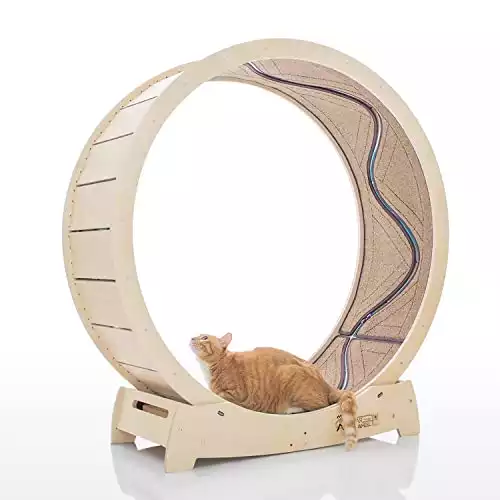

This is at least 10" taller than any other cat wheel and at 66lb can easily take a large cat or even several at a time if you're a multi cat household.
Despite the fact it can easily handle the biggest of cats its best feature is the luminous fish that travels inside the tube you can see within the wheel.
This keeps your cat's attention ensuring he gets plenty of exercise. Most cat owners have reported that they have to apply the brake so their cats don't overheat.
- Easily takes even the biggest breeds and wide enough for 2 cats
- The moving fish design keeps cats entertained and engaged.
- Star Cat Wheel is designed with safety in mind, minimizing gaps and featuring a pin-brake system to prevent accidents.
- The wide running track and golden ratio design make it easy for cats to run, spin, and scratch
- Super quiet
- The assembly process can be time-consuming
- At 66lbs its heavy to move around
Even though Persian cats are known for their laid-back personalities, it’s essential to engage them in regular exercise if they are to enjoy a long and happy life. Providing playtime helps maintain their physical health and mental stimulation.
Toys can help encourage your Persian cat to stay active. Try offering them a variety of options like catnip toys, feather wands, and crinkly balls to keep their interest.
Interactive toys are a fantastic choice to keep your Persian cat’s mind sharp. Puzzle toys and treat-dispensing toys can challenge them and make playtime more engaging.
Playtime also helps release any pent-up energy in your Persian cat. Encourage activities that involve jumping, chasing, and pouncing to help burn off excess energy and keep them fit. A cat wheel is an ideal way for your cat to burn off some energy before bedtime.
Since Persian cats are generally indoor pets, ensure their safety when outdoors. If you choose to take them outside, consider using a secure cat harness and lead for supervised exploration.
Remember, a well-exercised and stimulated Persian cat is more likely to remain happy and healthy throughout their lifespan. So make sure you incorporate playtime into their daily routine.
The Indoor vs. Outdoor Debate
When considering your Persian’s lifespan, the choice between indoor and outdoor living plays a significant factor. Both options have their advantages and drawbacks.
It is an accepted fact that today the life expectancy for indoor cats is up to 4 times that of a free to roam cat. Indoor cats get to avoid the hazards that outdoor cats face, like vehicles, other aggressive animals, and diseases.
However, don’t dismiss the benefits of outdoor life for your Persian. The outdoor environment can provide valuable mental and physical stimulation. Regular exposure to sunlight, fresh air, and exercise can help keep your Persian cat healthy, both mentally and physically.
This choice isn’t all-or-nothing; you should explore supervised outdoor time for your Persian. That way, they still gain the benefits without facing the full range of potential dangers.
When making a decision, factor in your location and local environment. Assess the potential risks and resources available, such as harness training, cat-proof fencing or outdoor cat enclosures.
Ultimately, your goal is to provide the best life for your Persian cat while ensuring their longevity and happiness.
Choosing a Breeder
When looking for a Persian cat breeder, it’s essential to find one who prioritizes the health and well-being of their cats. You should research the reputation of various breeders and consider factors like pedigree and health guarantees.
Persian cats are known for their diverse coat colors and patterns, including solid shades, silver, golden, smoke, shaded, tabby, particolor, bicolor, and pointed colors like Himalayan. As you explore breeders, pay attention to their expertise in breeding cats with specific coat types, especially if you have a preference.
Be cautious of cat breeders who may be running “kitty mills.” Such breeders are typically more concerned with profits than the well-being of their cats. Do your homework and find a reputable, responsible breeder who shares a passion for the breed and its heritage.
It’s helpful to look for a breeder who shares pictures and information about their cats, so you can get a sense of their care and dedication to the breed. Reach out to breeders and ask about their breeding process, their knowledge of the breed’s characteristics, and how they work to maintain the health of their cats.
Try not to focus solely on renowned breeders or those who breed show-quality Persian cats. Smaller, lesser-known breeders might also be a good choice, as long as they demonstrate a commitment to the health and happiness of their cats.
Remember, choosing a breeder is an essential step in bringing a healthy, happy Persian cat into your life. By taking the time to research and select a conscientious and experienced breeder, you are more likely to find a beloved companion that will be with you for many years to come.
Healthcare and Vet Visits
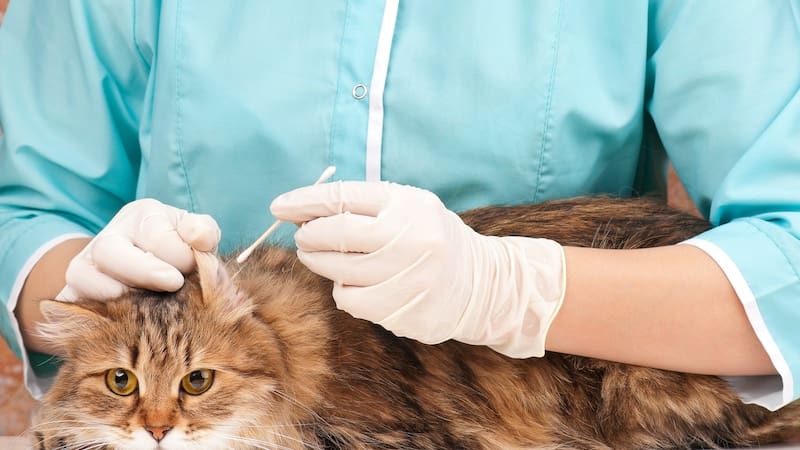

Keep in mind that your Persian cat’s lifespan can be greatly impacted by their healthcare and vet visits. Ideally, you should take your Persian cat for regular checkups to monitor their health.
Vaccinations are crucial for your feline friend to help prevent various diseases. Make sure to stick to the vaccination schedule recommended by your vet.
It is also essential to get your Persian cat neutered or spayed by around six months old. Neutering and spaying have multiple benefits in addition to controlling overpopulation, such as reducing the risk of certain medical issues.
Stay alert to recognize any signs of health problems. Persian cats are prone to some conditions like cysts, parasites, and haircoat disorders. Early detection and treatment can play a significant role in your cat’s overall well-being.
If your cat requires prescription medication for any health issues, ensure that you provide the correct dosages. Doing so will help keep your Persian cat healthier throughout their life.
Finally, as Persian cats are susceptible to various health conditions, you might want to consider investing in pet insurance. This can help cover the costs of treatments and medical procedures, providing peace of mind for both you and your feline companion.
Dealing with Behavioral Issues


Your Persian cat may encounter some behavioral issues due to their unique personalities. It’s essential to address these problems to ensure a happy and healthy life.
Creating a fun, stimulating environment will also curb their high-energy tendencies.
If your Persian tends to chew on objects, provide them with appropriate chewing outlets. Offering a variety of chew toys can help redirect this behavior.
Consider investing in scratching posts or pads to discourage destructive scratching. Placing these throughout your home can help maintain their nails and satisfy their natural instincts.
Maintaining your Persian cat’s nails is important, too. Trimming them regularly will reduce the chances of accidental scratches and discomfort.
Remember, understanding your cat’s unique personality is key to addressing any behavioral issues they may face. By providing a supportive environment and catering to their needs, you’ll ensure their well-being throughout their lifespan.
The Role of Genetics in Lifespan
Persian cats live up to 18 years. However, due to their genetic makeup they are predisposed to certain health conditions. For example, they may experience polycystic kidney disease (PKD) and respiratory problems, which can potentially shorten their lifespan.
Responsible breeding practices can make a difference though. Reputable breeders focus on selective breeding to eliminate genetic disorders common to the breed.
In particular, they work to reduce the prevalence of PKD and hypertrophic cardiomyopathy (HCM).
Friendly reminder: it’s essential to research breeders and choose a healthy kitten from a litter with no known genetic issues. This way, you’re contributing to the overall health and wellbeing of cat breeds.
Another genetic condition to be aware of in the Persian breed is progressive retinal atrophy (PRA). This inherited disorder affects a cat’s vision, eventually leading to blindness.
Some breeders screen their cats for PRA to ensure they don’t pass the disorder on to their offspring.
Frequently Asked Questions
How long do Persian cats typically live?
An indoor Persian cat can typically live between 12 to 18 years. The average Persian cat’s lifespan is around 13.5 years.
What factors affect the lifespan of a Persian cat?
The cat’s environment, diet, and lifestyle can impact their lifespan. An obese cat may not live as long as a feline with a healthy weight.
Do flat-faced cats like Persians have health issues?
Yes, flat-faced cats like Persians can have health issues, such as breathing difficulties and eye problems. Regular vet check-ups can help identify and treat these issues early on.
How can I improve the lifespan of my Persian cat?
Providing a balanced diet, regular grooming, mental stimulation, and proper veterinary care can help improve your cat’s longevity. Always consult your veterinarian for personalized advice.
Are there any common illnesses to watch for in Persian cats?
Some common illnesses in Persian cats include haircoat disorders, dental disease, overgrown nails, eye discharge, cancer, and kidney disease. Monitoring your cat’s health and seeking veterinary care when needed can help keep them healthy.
Do indoor and outdoor environments impact a Persian cat’s lifespan?
Yes, the environment can impact a Persian cat’s lifespan. Indoor living helps reduce the risk of accidents, infections and other hazards, while outdoor cats will face increased risks.

